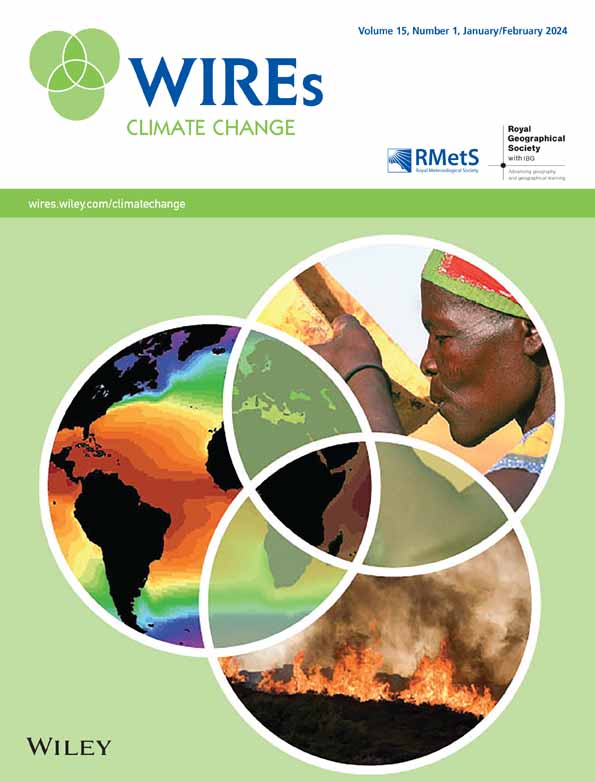Metrics as tools for bridging climate science and applications
IF 10.3
1区 环境科学与生态学
Q1 ENVIRONMENTAL STUDIES
引用次数: 5
Abstract
In climate science and applications, the term “metric” is used to describe the distillation of complex, multifaceted evaluations to summarize the overall quality of a model simulation, or other data product, and/or as a means to quantify some response to climate change. Metrics provide insights into the fidelity of processes and outcomes from climate models and can assist with both differentiating models' representation of variables or processes and informing whether models are “fit for purpose.” Metrics can also provide a valuable reference point for co‐production of knowledge between climate scientists and climate impact practitioners. Although continued metric developments enable model developers to better understand the impacts of decisions made in the model design process, metrics also have implications for the characterization of uncertainty and facilitating analyses of underlying physical processes. As a result, comprehensive evaluation with multiple metrics enhances usability of climate information by both scientific and stakeholder communities. This paper presents examples of insights gained from the development and appropriate use of metrics, and provides examples of how metrics can be used to engage with stakeholders and inform decision‐making.作为连接气候科学和应用的工具的指标
在气候科学和应用中,“度量”一词用于描述复杂、多方面评估的提炼,以总结模型模拟或其他数据产品的总体质量,和/或作为量化对气候变化的某些反应的一种手段。度量可以深入了解气候模型的过程和结果的保真度,有助于区分模型对变量或过程的表示,并告知模型是否“符合目的”。度量还可以为气候科学家和气候影响从业者之间的知识合作提供有价值的参考点。尽管持续的度量开发使模型开发人员能够更好地了解模型设计过程中所做决策的影响,但度量也对不确定性的表征和促进潜在物理过程的分析具有影响。因此,具有多个指标的综合评估提高了科学界和利益攸关方社区对气候信息的可用性。本文举例说明了从指标的开发和适当使用中获得的见解,并举例说明了如何使用指标与利益相关者互动并为决策提供信息。
本文章由计算机程序翻译,如有差异,请以英文原文为准。
求助全文
约1分钟内获得全文
求助全文
来源期刊

Wiley Interdisciplinary Reviews: Climate Change
METEOROLOGY & ATMOSPHERIC SCIENCES-
CiteScore
20.00
自引率
2.20%
发文量
58
审稿时长
>12 weeks
期刊介绍:
WIREs Climate Change serves as a distinctive platform for delving into current and emerging knowledge across various disciplines contributing to the understanding of climate change. This includes environmental history, humanities, physical and life sciences, social sciences, engineering, and economics. Developed in association with the Royal Meteorological Society and the Royal Geographical Society (with IBG) in the UK, this publication acts as an encyclopedic reference for climate change scholarship and research, offering a forum to explore diverse perspectives on how climate change is comprehended, analyzed, and contested globally.
 求助内容:
求助内容: 应助结果提醒方式:
应助结果提醒方式:


